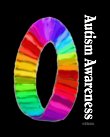The most widely used visual support for autism are PECs cards (Picture Exchange Communications). I think it was started with ABA therapy, but is used in various ways with most therapy systems now. We used to use them primarily for communication when he was non-verbal. Now that he is somewhat verbal we still use them for prompts and integrated into social stories and visual schedules.
Determine the size you want
We use the 2 inch size. They come both smaller and bigger, but be wary of small ones if your child has any fine motor difficulties. The smaller ones are also easier to lose and harder to see (at least to me, and I need to be able to see them too) but they are good for portable systems and more compact systems. Generally, it seems like the 2 inch ones are the most widely used, but that might be a local phenomena too.
Supplies
- cardstock or heavier paper (index card type paper, preferably without lines)
- images (boardmaker, photos, computer searches, hand drawn)
- a way to protect the cards (laminator or packing tape)
- scissors
- velcro. lots and lots of velcro
Creating the Cards: I would HIGHLY recommend purchasing the Boardmaker system.
- It seems to be the gold standard and has huge libraries available for use.
- Even when you have gotten past using them for basic communication it would still save a huge amount of time for visual schedules, social stories, and prompts.
- Because it is so widely used, it creates familiarity with the actual pictures and your child doesn’t have to work as hard to understand the meaning of pictures used by different people. There is more chance that all of the various therapists and schools will have the same pictures.
Creating the Cards without Boardmaker
If you can’t afford Boardmaker, just know that you will spend a lot of time and effort to create a system. It is a whole lot easier to do this now than it used to be because of the advent of internet search engines (I am partial to Google) because you can search images and don’t have to hand draw everything.
- Cheap, no technical skill, not pretty: Find images in magazines, photos, or draw them on cards. Can use index cards, or index cards cut in half. Write the title. done.
- Cheap, low technical skill, not pretty: You will need some image software that can resize images. Infranview is a free, very basic program. Size the image to fit on the card, print it up, and glue it to a card and write the title on the card.
- Cheap (if you have the software), higher technical skill, much prettier: (This is how I do it) I have an older photoshop I already own, so this was my first preference. I rely heavily on using layers to make a template, replacing the picture layer with every card, and retyping the title layer with each card. The template has layers that I turn invisible before I save the image that help me line up the pictures and the writing so that all of the cards look basically the same.
Now, you have the actual cards, protect them
- Cheap, not pretty: cut the cards apart (if you printed a bunch of them on one sheet) and use clear packing tape to cover them. Look for packing tape that is the same width as the cards you are trying to create to make it a little easier.
- Not cheap (initially), much prettier: get a laminator. I prefer the heat laminators because I think they create a sturdier laminate (but that is purely speculation on my part). I found that cutting them apart first created the monster of all messes, so now I leave them on the sheet I printed them up on and laminate the whole page, cutting them apart afterwards. If I am good at lining up the cards on the paper, I can use a paper cutter to separate them, but usually I just have to use a scissors.
Stick ‘em
This is the velcro step. Some advice…
- buy it in bulk. you are going to use a LOT of this stuff. Once you start using it for the communication system, you will start finding all sorts of uses for it around the house too.
- have a scissor dedicated to cutting velcro because it ruins the scissors. Unless you can clean and sharpen your paper cutter blade easily, don’t use the paper cutter. You can also buy velcro dots, which are a time saver, but are more expensive and not as flexible. I prefer strips for the surface you stick it to because it allows more flexibility on the number of cards you can place on the strip.
- Decide early on which side you are going to have on the cards, and which you are going to have on the surfaces. I recommend having the rougher side on surfaces because they are less likely to have as much exposure to lint, hair, crumbs and everything else that gets tangled in the velcro. The soft side still picks up some things, but not NEARLY as much. Plus, the soft side doesn’t scratch you as much if you have a bunch of cards loose in a box and you are trying to fish out a particular card. If you don’t pay attention to which kind of velcro is on which side, you end up with cards that won’t really stick to things. (remember the magnet principle…opposites attract)
- Try and use a small amount of velcro on the cards themselves. If you get too much you risk pulling the surface velcro up with it because it pulls too hard for the surface you have it attached to.


I am looking for Church communication exchange cards to teach my autistic son church things and bible.. do you have any ideas where I can find/get one????